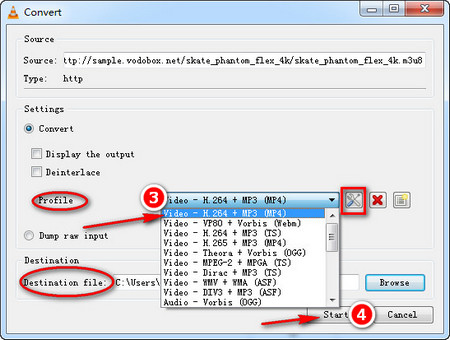
We can see there are two available streams: a video and an audio stream. Ignore the warning about the missing output file. Stream #0:1(und): Audio: aac (LC) (mp4a / 0圆134706D), 48000 Hz, stereo, fltp, 126 kb/s (default)Īt least one output file must be specified Input #0, mov,mp4,m4a,3gp,3g2,mj2, from 'sintel_trailer-1080p.mp4':Ĭopyright : (c) copyright Blender Foundation | ĭescription : Trailer for the Sintel open movie projectĭuration: 00:00:52.21, start: 0.000000, bitrate: 2240 kb/s The first thing to do is determine what streams are in the video, which we can do with the following command: $ ffmpeg -i sintel_trailer-1080p.mp4 -hide_banner The bit rates will be 2 kB/s and 365 kb/s respectively (as per Apple’s guidelines). We’ll create two variants: a 540p and a 360p version. Apple publishes guidelines for authoring HLS video streams that includes – among other things – recommended video and audio bit rates.

The examples below use the 1080p version of the Sintel trailer which you can download here. It allows a client device to choose the most appropriate stream based on factors such as the capabilities of the device, available bandwidth, and so on.

In this post you’ll see how to create an HLS master playlist with ffmpeg for video on-demand.Ī master playlist contains references to different variant streams (typically encoded at different bit rates) and can also include links to alternative audio tracks and audio-only renditions.


 0 kommentar(er)
0 kommentar(er)
